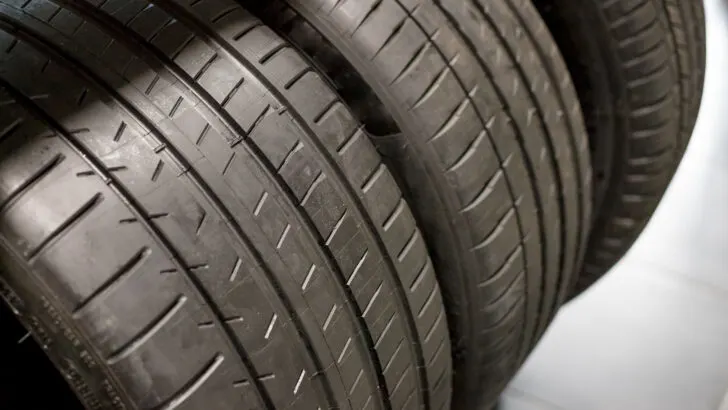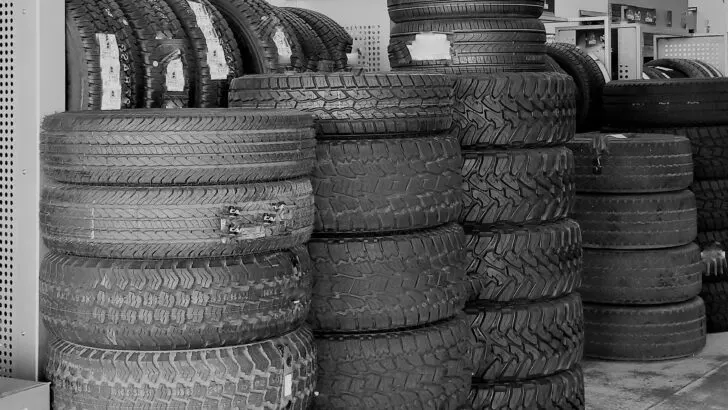You may have heard of getting 325 tires for your truck or your SUV. What size tire is a 325? Are they a good choice?
325 tires are 10 to 12 inches wide and 30 to 35 inches high. They are used on SUVs and light trucks. They are great general-purpose tires, but not great if you need a special tire for carrying heavy loads or driving off-road.
325 tires give you a smooth ride and excellent handling.
Are 325 Tires Large?
325 tires are relatively large. Trucks and SUVs rather than cars have 325 tires. Many larger trucks use bigger tires than 325s.
325 Tires Are Wide
325 tires are much wider than many other tires. They are up to a foot wide, which is uncommon for regular passenger car tires. Tires for special applications such as towing or driving off-road are often wider, but 325s are wide for general-purpose tires.
Dimensions of 325 Tires

Not every 325 tire is exactly or nearly the same size. Different companies make 325 tires of different sizes. They can be anywhere from 30 to 35 inches high, and anywhere from 10 to 12 inches wide.
Why Are They Called 325 Tires?
325 refers to the tire’s tread width. The tire’s tread width is always 325 millimeters (a bit less than 27 inches), even though the width and height of a 325 tire vary.
Advantages of 325 Tires
325 tires give you excellent traction. Because of their width, a lot of the tire is in contact with the ground. This helps you stay in control.
For their size, 325 tires work well in wet or icy conditions. They only underperform compared to larger tires designed for rough weather. 325 tires also last longer than many other tires, especially smaller tires.
Even in good driving conditions, you will still find that your car handles better if you drive with wider tires. Wider tires also make driving your car more comfortable.
Other Advantages of Wider Tires
Larger wheels and tires absorb shocks, making you less likely to lose control of the car if you hit anything. Wider tires will also increase the ground clearance, so you can drive on bumpy terrain without doing any damage. Wider tires can also make your truck look more impressive.
Better Braking
While wider tires can lead to wear and tear on your brakes, they also make braking more effective. You can stop faster because more of your tire contacts the ground. Wider tires can prevent an accident if you have to slam on the brakes.
Safer Cornering
Different people have different opinions on whether wider tires make turning safer. It all depends on the driver.
Many say that wider tires make cornering easier than narrower tires. However, some say that it’s the other way around for sharp enough corners.
If you turn a very sharp corner too fast and lose control, wider tires can prevent your car from flipping over. Braking when going around corners also works better with wider tires.
Better Traction
With wider tires, there is better traction either in good or bad driving conditions. Wider tires usually perform better in wet, dry, on-road, or off-road conditions.
Disadvantages of 325 Tires
While 325 tires give you great control in many situations, they are not always the best in wet or icy conditions. Many tires are larger than 325 tires, and these tires perform better on wet and icy roads. Don’t use somewhat large 325 tires when larger tires would perform much better.

325 tires are also not as durable as some other tires, especially not larger tires. If you are on rough terrain or carrying anything heavy, tire durability is crucial.
General Disadvantages of Wider Tires
Wider is not always better. Wider tires are not the right choice if you want to maximize your fuel economy.
Wider tires create more friction, which reduces your mileage. Wider tires are also heavier, which makes your car need a bit more fuel.
Slower Acceleration
You also can't speed up as fast with a bigger tire. There is more contact with the ground, which has advantages and disadvantages. A disadvantage of more contact area is slower acceleration.
Sometimes, wider tires can make steering more difficult. Sometimes you may find that wider tires give you superior control. Other times, you may find that narrow tires perform much better on sharp turns.
Reduced Speedometer Accuracy
Speedometers are sometimes also less accurate with wider tires. Wider tires should not be thought of as dangerous. However, an inaccurate speedometer can prevent safety systems that depend on the speedometer from working properly.
Wear and Tear on Brakes
Your brakes have to squeeze harder to stop the car if you have wide tires. This makes brake repairs more common. Wider tires are also usually more expensive than narrow tires.
Key Takeaways to 325 Tires
325 tires are mid-sized tires that you find on SUVs and smaller trucks. Larger trucks usually use larger tires than the 325.
325 tires are wide, so they give you good control and handling. 325 tires can make your ride more comfortable. They are only wide for regular-passenger car tires, not wide compared to off-road tires.
For their size, 325 tires perform well on wet roads and ice. However, they aren’t the best on ice roads if larger tires are an option.
For ordinary tires, 325 tires are durable enough. However, they may not be durable enough for rough terrain or carrying anything heavy.
